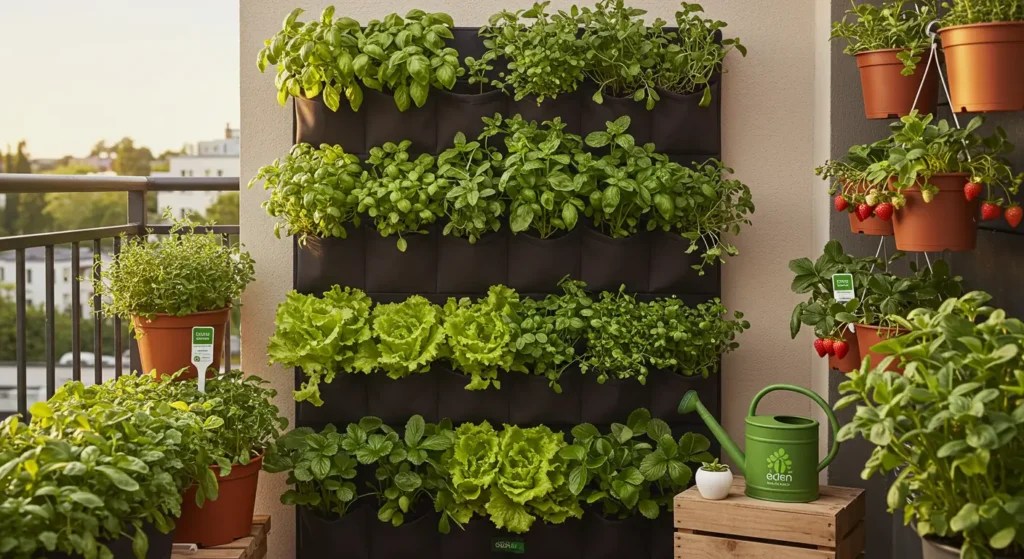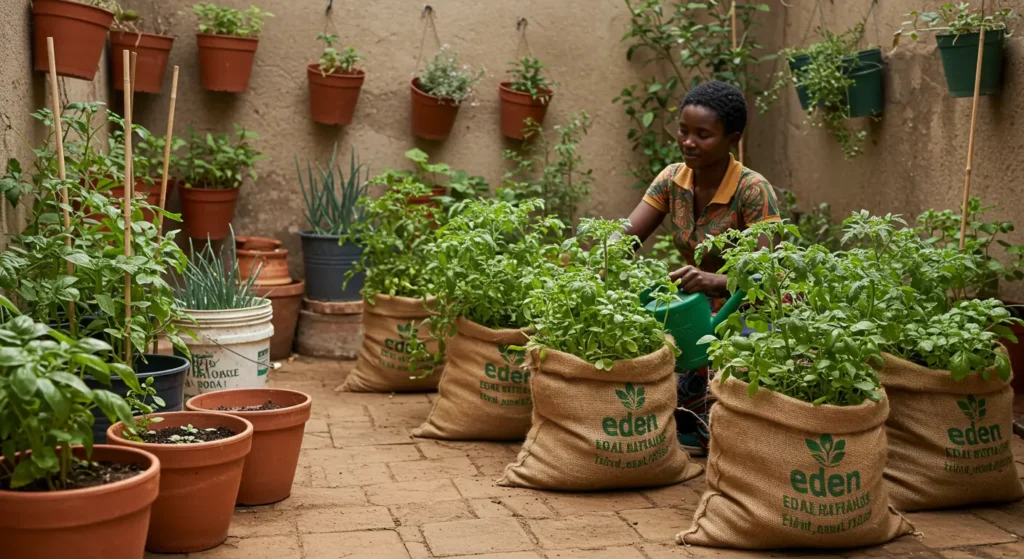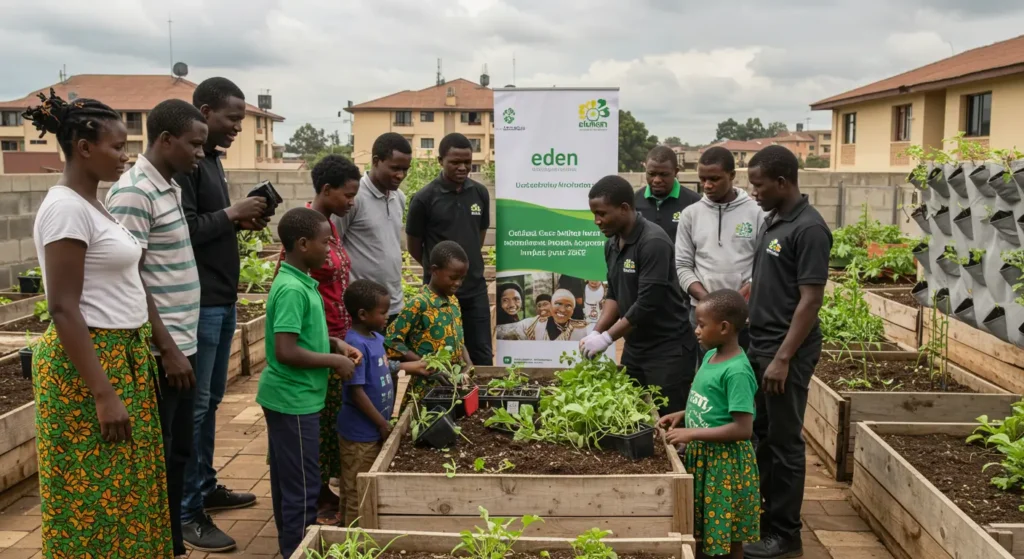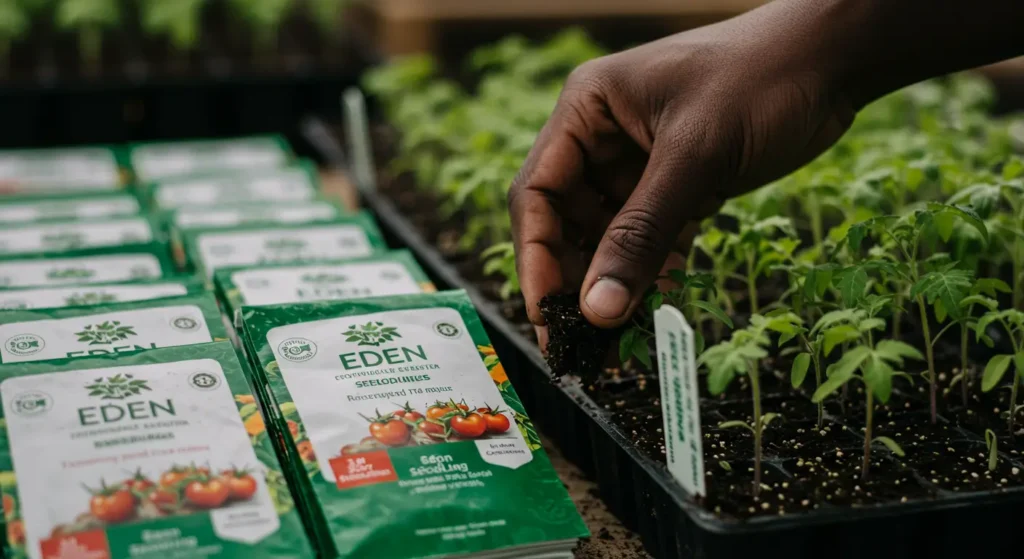In the middle of a hectic workweek, there’s something quietly revolutionary about plucking a bright green spring of coriander from your own balcony pot and dropping it into dinner. Kitchen gardens are no longer the preserve of rural homesteads, they are a growing trend in Kenyan towns and cities as people demand fresher food, better food safety and a stronger connection to what they eat. This guide walks you through practical options (from whole plots to vertical balcony systems), the best crops for urban conditions, how to start and where to find reliable seedlings and seeds, including the planting materials stocked by Eden Lawn & Garden Centre.
Why kitchen gardens are trending now
Urban households are embracing kitchen gardens for three big reasons: nutrition, food safety and convenience. Microgreens and home‑grown leafy greens pack high nutrient value in small spaces and can be produced quickly for regular use. Urban agriculture policies and community programs are also formalising spaces for food production in cities, encouraging residents to convert balconies, rooftops and small yards into productive plots.

Options: choose the kitchen garden that fits your life
No space? No problem. Here are practical models depending on how much room and time you have:
1. The backyard kitchen plot — the classic:
If you have a small yard (3–20 sqm), a raised bed or series of beds gives excellent yields. Raised beds improve drainage and soil control and make weeding easier. Plan paths for access, rotate families of vegetables each season and dedicate one bed to fast‑yielding greens for continuous harvests.

2. Container gardening and sack gardens:
Pots, grow bags and recycled containers work well for tomatoes, chillies, onions and herbs. Use good potting mix, ensure drainage holes and pick varieties suited to containers (dwarf tomatoes, bush peppers). Sack gardens; vertical stacks made from jute or poly sacks are hugely popular in Kenyan urban contexts because they’re cheap and space‑efficient.

3. Vertical gardening & balcony agronomy:
Vertical planters, wall pockets and tiered shelving let you turn a narrow balcony into a productive strip. Vining crops like cucumbers and certain tomatoes can climb trellises; herbs, lettuce and strawberries thrive in pocket planters. Vertical gardening can reduce water use and multiply production per square metre. There are many DIY and ready‑made vertical systems tailored for Kenyan apartments.

4. Microgreens & shallow‑tray systems:
Microgreens take 7–21 days to harvest, need minimal light and provide a nutrient punch for salads and sandwiches. They’re ideal for kitchens with a sunny windowsill or a small balcony and are low‑risk for beginners.
Best crops to grow in Kenyan urban gardens
Choose plants that match your climate, space and cooking habits. Here are dependable choices for Kenyan cities:
- Leafy greens: sukuma wiki (kale), spinach, amaranth — fast growing and highly productive.
- Herbs: coriander (dhania), basil, mint, rosemary — small footprint and high culinary value.
- Tomatoes: choose determinate or dwarf varieties for containers; cherry tomatoes are especially productive.
- Peppers: hot and sweet peppers do well in pots.
- Alliums: spring onions are quick; onions and garlic need deeper containers but store well.
- Roots: carrots and radishes in deep containers or raised beds.
- Berries: strawberries in hanging pots or vertical pockets.
- Microgreens: broccoli, radish, sunflower, pea shoots — quick harvests and high nutrient density.
Where to get seedlings, seeds and supplies
Reliable planting material matters. Seed quality affects germination, disease resistance and yield. For urban growers, ready seedlings speed up success but good seeds give the best long‑term value. Local nurseries, certified seed companies and trusted marketplaces are excellent sources.

Eden Lawn & Garden Centre stocks a wide range of seeds, certified seedlings, potting mixes, grow bags and easy‑to‑install vertical planters. Our supplier pages list provenance and growing notes so urban gardeners can compare options quickly. If you prefer in‑person shopping, check local nurseries that supply grafted tomato seedlings and disease‑resistant varieties many Nairobi and Mombasa nurseries now specialize in urban‑friendly cultivars.
Quick start: 10 tips for busy urban gardeners
1. Assess sunlight: monitor your balcony or yard for 4–6 hours of direct light; leafy greens tolerate partial shade.
2. Use a good potting mix and add compost — healthy soil beats chemical fixes.
3. Start with easy crops: herbs, sukuma, tomatoes and microgreens build confidence.
4. Water efficiently: use drip or self‑watering containers to reduce time and waste.
5. Rotate crops and avoid planting the same family in the same soil repeatedly.
6. Pest management: use physical barriers, companion planting and safe organic options where possible.
7. Label containers and keep a simple journal of planting and harvest dates.
8. Harvest regularly – many leafy crops respond to cut‑and‑come‑again harvesting.
9. Save seeds from strong performers but start with certified seeds for disease resistance.
10. Keep basic tools: a trowel, pruning shears, watering can and a pH tester if you’re serious.
Food safety and nutrition – why growing your own helps
Homegrown produce reduces the time between harvest and plate, improving freshness and nutritional value. Microgreens and leafy greens grown correctly offer concentrated vitamins and minerals. Growing at home also gives you control over pesticides and fertilisers, allowing you to choose organic or low‑input methods and reduce chemical exposure. As always, wash produce well before eating.
Turn your kitchen garden into a small business or community project
Many urban growers sell surplus at local farmer markets, to neighbors, or via social media. Microgreens and herbs have short production cycles and can be a profitable micro‑enterprise with low start‑up costs. Community gardens and rooftop projects also build resilience and strengthen neighborhood food systems. If you’re scaling up, keep records, check local market demand and consider food safety regulations for selling produce.
Start small, grow steady – your urban kitchen garden awaits
Kitchen gardens are an accessible way to improve your diet, reduce food miles and reconnect with the food you eat. Whether you have a full backyard, a sunny balcony, or just a bright windowsill, there’s a model that fits. For seeds, seedlings, vertical planters and growing advice, Eden Lawn & Garden Centre curates quality options and supplier notes to help urban growers succeed.
Happy Planting!







